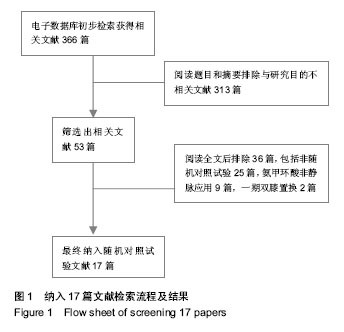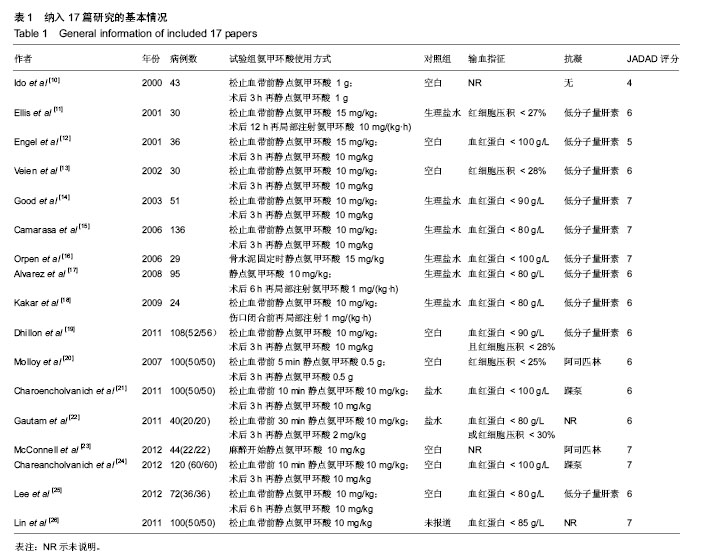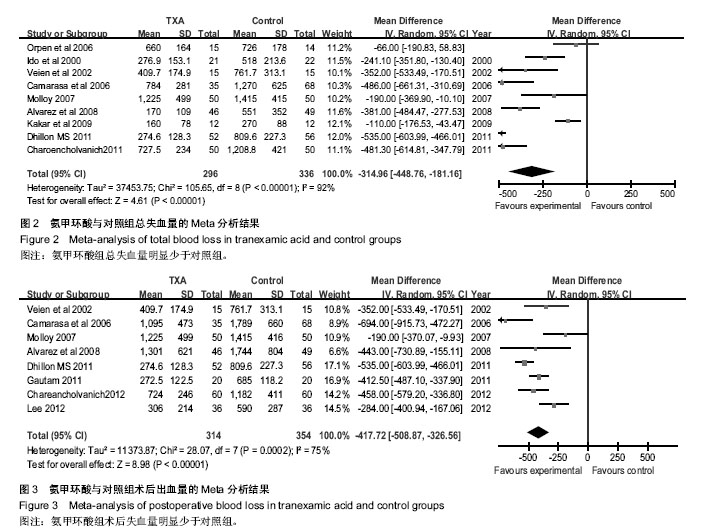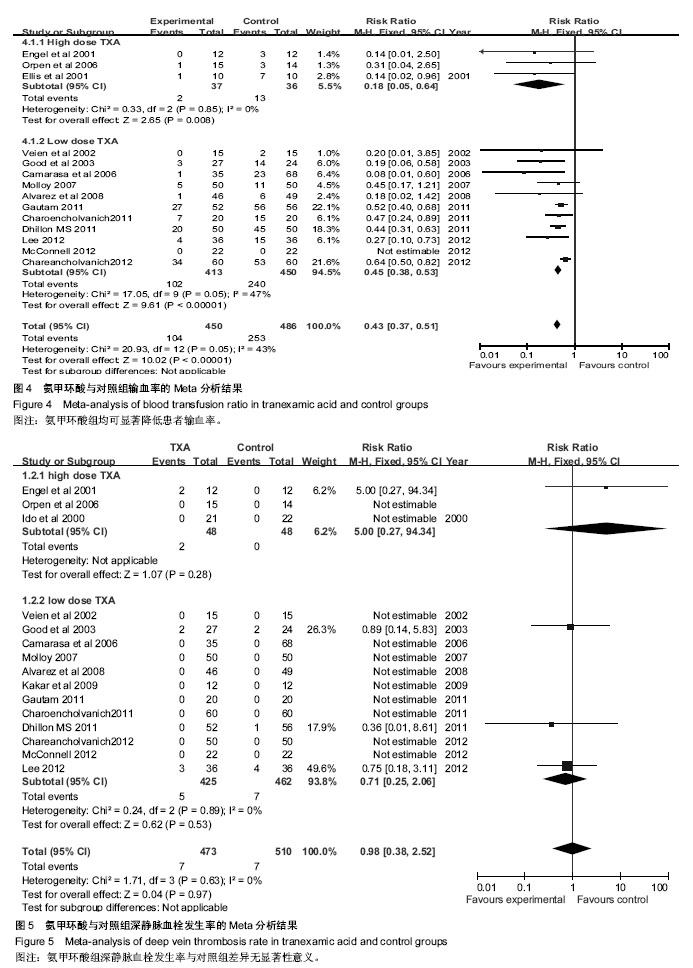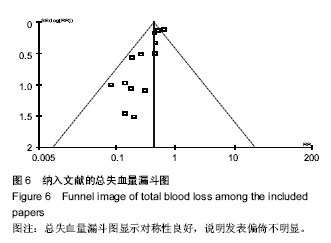| [1] 赵旻暐,李子剑,张克. 氨甲环酸在人工全膝关节置换术中的应用[J].中华关节外科杂志(电子版),2014,8(2):236-239.
[2] Barwell J, Anderson G, Hassan A, et al. The effects of early tourniquet release during total knee arthroplasty: a prospective randomized double-blind study. J Bone Joint Surg [Br].1997;79:265-268.
[3] Kumar A. Perioperative management of anemia: limits of blood transfusion and alternatives to it. Cleve Clin J Med. 2009; 76:112-118.
[4] Lemaire R. Strategies for blood management in orthopaedic and trauma surgery. J Bone Joint Surg [Br].2008;90: 1128-1136.
[5] Hill GE, Frawley WH, Griffith KE, et al. Allogeneic blood transfusion increases the risk of postoperative bacterial infection: a meta-analysis. J Trauma Acute Care Surg. 2013;54(5):908-914.
[6] Rajesparan K, Biant LC, Ahmad M, et al. The effect of an intravenous bolus of tranexamic acid on blood loss in total hip replacement. J Bone Joint Surg [Br]. 2009;91:776-783.
[7] Sukeik M, Alshryda S, Haddad FS,et al.Systematic review and meta -analysis of the use of tranexa mic acid in total hip replacement.J Bone Joint Surg Br.2011;93(1):39-46.
[8] 方志辉,杨华清,李兵奎,等. 氨甲环酸应用于膝关节置换术随机对照安慰剂试验的Meta分析[J].中华临床医师杂志(电子版), 2012,6(24):8173-8179.
[9] Panteli M, Papakostidis C, Dahabreh Z, et al. Topical tranexamic acidintotal knee replacement: Asystematic reviewandmeta-analysis. Knee. 2013;20(5):300-309.
[10] Ido K, Neo M, Asada Y, et al. Reduction of blood loss using tranexamic acid in total knee and hip arthroplasties. Arch Orthop Trauma Surg. 2000;120:518-520
[11] Ellis MH, Fredman B, Zohar E, et al. The effect of tourniquet application, tranexamic acid, and desmopressin on the procoagulant and fibrinolytic systems during total knee replacement. J Clin Anesth. 2001;13:509-513.
[12] Engel JM, Hohaus T, Ruwoldt R, et al. Regional hemostatic status and blood requirements after total knee arthroplasty with and without tranexamic acid or apro-tinin. Anesth Analg. 2001;92:775-780.
[13] Veien M, Sørensen JV, Madsen F, et al. Tranexamic acid given intraop-eratively reduces blood loss after total knee replacement: a randomized, controlled study. Acta Anaesthesiol Scand. 2002;46:1206-1211.
[14] Good L, Peterson E, Lisander B. Tranexamic acid decreases external blood loss but not hidden blood loss in total knee replacement. Br J Anaesth. 2003;90:596-599.
[15] Camarasa MA, Ollé G, Serra-Prat M, et al. Efficacy of aminocaproic, tranexamic acids in the control of bleeding during total knee replacement: a randomized clinical trial. Br J Anaesth. 2006;96:576-582.
[16] Orpen NM, Little C, Walker G, et al. Tranexamic acid reduces early post-operative blood loss after total knee arthroplasty: a prospective randomised con-trolled trial of 29 patients. Knee. 2006;13:106-110.
[17] Alvarez JC, Santiveri FX, Ramos I, et al. Tranexamic acid reduces blood transfu-sion in total knee arthroplasty even when a blood conservation program is applied. Transfusion. 2008; 48:519-525.
[18] Kakar PN, Gupta N, Govil P, et al. Efficacy and safety of tranexamic acid in con-trol of bleeding following TKR: a randomized clinical trial. Indian J Anaesth. 2009;53: 667-671.
[19] Dhillon MS, Bali K, Prabhakar S. Tranexamic acid for control of blood loss in bilateral total knee replacement in a single stage. Indian J Orthop. 2011;45:148-152.
[20] Molloy DO, Archbold HA, Ogonda L, et al. Comparison of topical fibrin spray and tranexamic acid on blood loss after total knee replacement: a prospective, randomised controlled trial. J Bone Joint Surg Br. 2007;89(3):306-309.
[21] Charoencholvanich K, Siriwattanasakul P. Tranexamic acid reduces blood loss and blood transfusion after TKA: a prospec-tive randomized controlled trial. Clin Orthop Relat Res. 2011;469 (10):2874-2880.
[22] Gautam PL, Katyal S, Yamin M, et al. Effect of tranexamic acid on blood loss and transfusion requirement in total knee re-placement in the Indian population: a case series. Indian J Anaesth. 2011;55(6):590-593.
[23] McConnell JS, Shewale S, Munro NA, et al. Reducing blood loss in primary knee arthroplasty: a prospective randomized controlled trial of tranexamic acid and fibrin spray. Knee. 2012; 19 (4):295-298.
[24] Chareancholvanich K, Siriwattanasakul P, Narkbunnam R, et al. Temporary clamping of drain combined with tranexamic acid reduce blood loss after total knee arthroplasty: a prospective randomized controlled trial. BMC Musculoskelet Disord. 2012;13:124.
[25] Lee SH, Cho KY, Khurana S, et al. Less blood loss under concomitant administration of tranexamic acid and indirect factor Xa inhibitor following total knee arthroplasty: a prospective ran-domized controlled trial. Knee Surg Sports Traumatol Arthrosc. 2012.
[26] Lin PC, Hsu CH, Chen WS, et al. Does tranexamic acid save blood in minimally invasive total knee arthroplasty?Clin Orthop Relat Res. 2011;469:1995-2002.
[27] Sehat KR, Evans R, Newman JH. How much blood is really lost in total knee arthroplasty:correct blood loss management should take hidden loss into account. Knee. 2000;7(3): 151-155.
[28] 高福强,李子剑,刘延青,等.初次全膝关节置换术后肢体肿胀程度与隐性失血量的相关性研究[J].中国矫形外科杂志,2011, 19(3): 199-202.
[29] Zhang H, Chen J, Chen F, et al. The effect of tranexamic acid on blood loss and use of blood products in total knee arthroplasty: a meta-analysis.Knee Surg Sports Traumatol Arthrosc. 2012;20(9):1742-1752.
[30] Ishida K, Tsumura N, Kitagawa A, et al. Intra -articular injection of tranexamic acid reduces not only blood loss but also knee joint swelling after total knee arthroplasty. Int Orthop. 2011;35(11):1639-1645.
[31] Camarasa MA, Olle G, Serra -Prat M, et al. Efficacy of aminocaproic,tranexamic acids inthe control of bleeding during total knee replacement: a randomized clinical trial. Br J Anaesth. 2006;96(5):576-582.
[32] Orpen NM, Little C, Walker G, et al. Tranexamic acid reduces earlypost -operative blood loss after total knee arthroplasty: a prospective randomized controlled trial of 29 patients. Knee. 2006;13(2):106-110.
[33] Roy SP,Tanki UF,Dutta A,et al.Efficacy of intra-articular Tranexamic acid in blood loss reduction following primary unil ateral total knee arthroplasty. Knee Surg Sports Traumatol Arthrosc. 2012;20(12): 2494-2501.
[34] Wong J, Abrishami A, El Beheiry H, et al. Topical application of tranexamic acid reduces postoperative blood loss in total knee arthroplasty: arandomized,controlledtrial.J Bone Joint Surg Am. 2010;92(15):2503-2513.
[35] Alshryda S, Mason J, Vaghela M, et al. Topical (intra-articular) tranexamic acid reduces blood loss and transfusion rates following total knee replacement: a randomized controlled trial (TRANX-K). J Bone Joint Surg Am. 2013;95(21): 1961-1968.
[36] Orpen NM, Little C, Walker G, et al. Tranexamic acid reduces early post-operative blood loss after total knee arthroplasty: a prospective randomised controlled trial of 29 patients. Knee. 2006;13(2):106-110.
[37] 王思群,黄钢勇,夏军,等.全膝关节置换术后膝关节位置对术后失血的影响[J].中华关节外科杂志:电子版,2011,5(2): 19-21.
[38] 岳辰,马俊,杨沛青,等.氨甲环酸减少同期双侧全髋置换围术期失血有效性及安全性研究[J].中国矫形外科杂志, 2014,22(10):865-869.
[39] Endo Y, Nishimura S, Miura A. Deep-vein thrombosis induced by tranexamic acid in idiopathic thrombocytopenic purpura. JAMA.1988;259(24):3561-3562.
[40] 尹勇,马广文,黄斐,等.氨甲环酸减少全髋关节置换失血量的Meta分析[J].中国组织工程研究.2014,18(17):2752-2757.
[41] Benoni G, Lethagen S, Fredin H.The effect of tranexamicacidon local and plasma fibrinolysis during total knee arthroplasty. Thromb Res. 1997;85:195-206.
[42] Yang ZG, Chen WP, Wu LD. Effectiveness and safety of tranexamic acid in reducing blood loss in total knee arthroplasty: a meta-analysis.J Bone Joint Surg Am. 2012;94: 1153-1159. |
